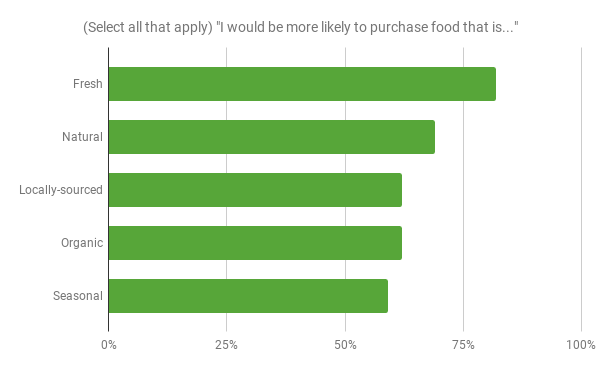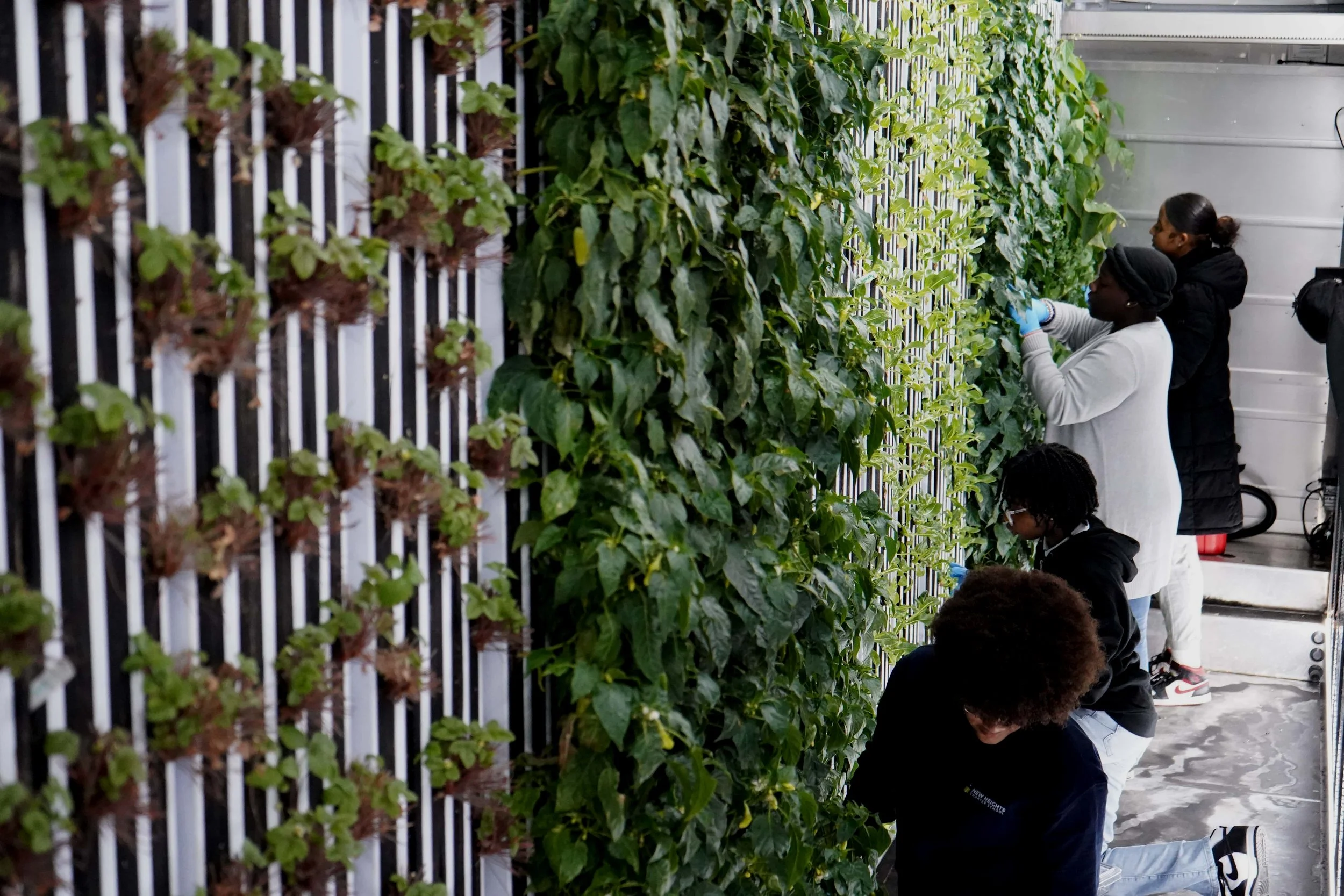School sustainability is more important than ever before.
Is your dining hall ready for Gen Z?
In the past ten years or so, the Millennials’ (born in 1981-1996) eating and buying habits started a great shift in college dining halls. The latest population of consumers, Generation Z (born 1997 and after), have assumed the same mantle and continue to demand more from their institutional food providers.
Here’s what you need to know about Gen Z.
Today, “Gen Zers” make up 25.9% of the U.S. population and, in spite of being under 22 years of age, already have $44 B in spending power. As we look ahead, we see that Gen Z’s influence on society will only grow: estimates show that by 2020, Gen Z will account for 44% of the population and will become the largest group of consumers worldwide.
While there’s a good amount of overlap in characteristics with Millennials, Gen Zers are defined as “determined, innovative, confident, collaborative, culturally diverse, highly entrepreneurial, tech-savvy, self-reliant, pragmatic, and adept.” Furthermore, they’ve grown up in food-conscious homes and school systems that emphasized healthy eating and food-as-wellness.
These savvy consumers are now leaving the comforts of home and are bringing their values to their college campus of choice. As colleges and universities look to appeal to this new demographic, they can’t discount the importance that food will play in students’ matriculation decisions and on-campus engagement.
Specifically, Gen Z college students are concerned with school sustainability initiatives and are looking for campus dining programs that:
Feature fresh and healthy menu items
Demonstrate social and environmental responsibility and transparency
Offer diverse and globally influenced flavors
Paying More for Healthy Options
91% of university food operations employees say that healthy menu items appeal to the college students at their school.
While this may not come as a surprise in our health-conscious world, it is definitely interesting to see that Gen Zers are willing to put their still-limited spending power behind their beliefs (graph A), and in some cases, they’re willing to spend more to enjoy healthy options (graph B).
Graph A
Sample: 650 college/university students.
Source: 2015 College & University Consumer Trend Report, Technomic Inc.
Graph B
Sample: 650 college/university students.
Source: 2015 College & University Consumer Trend Report, Technomic Inc.
It is clear from the data that fresh food is king for Gen Z college students. In fact, when college students were asked to self-report on the most important attributes of on-campus foodservice food, the use of fresh ingredients was rated second only to overall taste (55% and 64% respectively).
Many Gen Zers expect nothing less than fresh and health options: their childhood was spent in homes and schools where healthy eating was the norm. This health-conscious upbringing only gets stronger as Gen Zers approach adulthood: they expect companies, brands, and institutional dining services to share their values and provide healthy, fresh, and clean food.
Social Responsibility & School Sustainability
72% of university food operations employees say that social and environmental responsibility appeals to the college students at their school.
For most Gen Z students, it’s not enough to eat fresh. As consumers in general, the youngest generation looks for their institutions of choice to have a greater ‘mission’. For institutional food services, this means looking for local sourcing options and/or investing in campus-owned and student-operated farms (graph C).
In addition to the food they serve, colleges and universities are demonstrating their commitment to sustainability through other methods, such as employing full-time sustainability coordinators in dining services and executing short-term and long-term comprehensive plans for improving sustainability in foodservice.
Graph C
Sample: 768 college/university students.
Source: 2015 College & University Consumer Trend Report, Technomic Inc.
Looking for Variety
“It’s gone from ‘mystery meat’ to world-class fare,” says Gene Kellogg, food service veteran and President of ECS Consulting.
Up until the 80s, “there were very few college dining features that were appealing. The phrase ‘institutional food’ was a fitting term: the image of the long stainless steel counters and steam table was so prevalent you could cut and paste a cafeteria from one school to another without anyone noticing,” Gene continues.
But not anymore. Gen Z students entering the college dining environment have increasingly higher expectations: they’re adventurous and worldly eaters, and purchasing preferences reflect a more sophisticated palette.
“30 years ago, the only certificates handed out to college dining halls were by the Board of Health. Today, you find themed dining, sushi bars, and designer sundae stations” that make the dining experience more exciting.
Of 1,500 college students surveyed, 50% say that having ‘a wide variety of options’ is one of the most important attributes of on- and off-campus foodservice locations; 24% say availability to ‘new or unique foods, beverages, and flavors’ is most important.
How is Freight Farms poised to meet these needs?
Freight Farms is unique in its ability to help colleges and universities around the world meet, and even exceed, Gen Z’s expectations for fresh food, developed school sustainability initiatives, and diverse flavors. Our hydroponic container farm–the Greenery–helps universities demonstrate their dedication to social and environmental responsibility. The Greenery is a controlled-environment farm that uses vertical farming and hydroponics to turn the small footprint (only 320 sq.ft.) into a sustainable and high production farm.
How does the Greenery appeal to the newest generation of students?
The produce is fresh, healthy, and local.
Greens grown in our farm are harvested and delivered the same day, meaning that students will be able to enjoy the freshest produce around.
The freshness of the produce means that the vegetable are at their most nutritious. Since nutrients will degrade over time, eating plants just hours after harvest guarantee that students will reap the most health benefits from their salads.
Our farming methods are environmentally-friendly and sustainable.
The farm brings food production right to the university’s doorstep, therefore drastically reducing the distance food needs to travel from farm to plate.
The Greenery is designed to be incredibly water efficient: It uses 98% less water than in traditional farming operation.
The farm protects the plants from the outdoor environment, meaning that it requires no harmful pesticides, herbicides, or waxes. This, combined with the fact that the farm produces negligible water run-off, makes it completely harmless to the surrounding ecosystem.
The Greenery make salads fun again.
The farm will make students re-think what they know about “leafy greens”. The farm can grow over 150 varieties of lettuces, leafy greens, herbs, root vegetables, and edible flowers. Many of the plants students would get to try are hard to grow in large quantities in the U.S.













